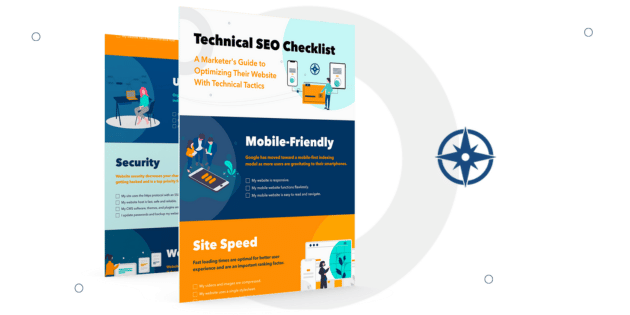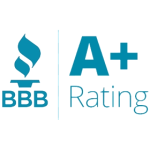SEO Checklist is crucial for driving organic traffic to your website. By optimizing your site for search engines like Google, you can improve your rankings and visibility in search results. This leads to more visitors, leads, and customers over time.
Implementing a strong SEO strategy takes work. There are many on-page and off-page factors to consider that impact ranking. To help guide your efforts, here is an SEO checklist with 10 must-have components for optimizing your website.
Clean Up Technical SEO Issues
Before diving into content and links, you must resolve any technical problems on your site that could hold back your rankings.
Improve Site Speed
Having a fast-loading website is extremely important for both search engine optimization (SEO) and user experience. Site speed has become a key ranking factor that Google uses in determining page rankings in search results. Google has explicitly stated they want to provide the best experience for searchers by showing them pages that load quickly.
There are a number of technical optimizations you can make to improve site speed:
Compress Images: Images often make up the majority of a web page’s file size. Compressing JPEG and PNG images can significantly reduce file sizes with negligible reduction in visual quality. Use image compression tools like TinyPNG or utilities through hosting providers. Set compression level anywhere from 10-30% reduction in KB size.
Minify CSS, JavaScript and HTML: Minification removes excess whitespace, comments and unnecessary code from CSS, JS and HTML documents without altering functionality. This streamlines files for faster page loading. Enable minification through WordPress plugins or leverage build tools like Webpack for custom web builds. Target at least 15-30% size reduction.
Enable Browser Caching: Browser caching stores website files locally on a user’s machine so pages load faster on repeat visits. Set proper cache headers on your server or through .htaccess rules for resources like images, CSS and JS files. This avoids re-downloading of assets that rarely change.
Optimize Web Hosting: Using a web host with high server response speeds and ample bandwidth ensures site infrastructure can handle spikes in traffic. Test hosts using online speed tests to compare capabilities. Implement content delivery networks (CDNs) and serve assets globally from geo-distributed edge servers.
A fast page load time is defined as anything under 3 seconds. Test your site’s speed through online tools like Google PageSpeed Insights and Pingdom Website Speed Test. Address the lowest rated optimizations first. Continually measure site speed as you make fixes to improve metrics over time, ultimately enhancing both SEO and user experience.
Fix Broken Links
Link rot will undermine user experience and authority building. Crawl your site regularly to identify and fix or remove broken links.
Prioritize fixing internal broken links first over external links you don’t control. Managing redirects is also wise for preserving link equity when URLs change on your site.
Improve Mobile Optimization
With more and more searchers on smartphones, having a mobile-friendly site is a must. You risk lower mobile rankings without an optimized mobile experience.
Ensure your site has:
– Responsive design
– Proper viewport meta tag
– Clickable buttons and links
– Easy-to-read text sized properly
Double check your site on multiple devices and use Google’s mobile-friendliness test.
Publish Fresh, Valuable Content
Now you can shift focus to your content marketing. Publishing remarkable content will drive organic growth over the long-term.
Research Target Keywords
Conduct thorough keyword research to find high-potential terms and phrases to target.
Identify keywords aligned to your products or services with sufficient search volume and competition to be worthwhile to target. This gives your content and optimization efforts focus.
Produce On-Page Content
On-page content factors heavily into relevance and rankings for target keywords.
Each page and blog post you publish should target one or more keywords. Incorporate these terms naturally throughout your content.
Other on-page elements to optimize include:
– Title tag
– Headings (H1, H2 tags)
– Image file names/ALT text
– Meta description
– Schema markup
Ideally, produce long-form, in-depth content like 2,000+ word blog posts on your site. Higher word counts tend to perform better.
Build Authoritative Backlinks
Gaining backlinks from quality websites signals to Google that your content provides value. This strengthens your domain authority and boosts SEO.
Identify Link Building Opportunities
Leverage ahrefs, SEMrush, or Majestic to analyze your competitors’ backlink profiles. Look for websites they’ve gained links from that could be prospects to reach out to.
Seek link sources aligned to your topic and audience. Sort by domain rating and traffic levels for the best chances at securing links.
Produce Link-Worthy Assets
Give sites a reason to want to link to you. Produce data-rich content like infographics, market research reports, surveys, and guides that support link requests.
For example, an SEO guide like this formatted as a downloadable PDF makes for a great linkable asset. Offer value to sites upfront to get links in return.
Reach Out Systematically
Don’t blast websites asking for links. Craft custom emails pitching your content and its value for publishers’ audiences.
Include links to your content in your outreach and offer to contribute written pieces or be interviewed as a guest expert. Follow up respectfully if you don’t hear back after 1-2 weeks.
Building relationships over providing value, not demanding links, wins over quality sites long-term.
Optimize for Local SEO (If Applicable)
Optimizing local SEO is crucial for businesses selling locally to drive foot traffic. Being found by nearby searchers helps you compete with chains and grow your customer base.
Complete Your Google My Business Listing
Google My Business functions as your company’s page on Google. This listing pops up prominently in local search results.
Fully complete your listing with:
– Accurate business information
– Well-written description
– Professional photos
– Service areas covered
– Correct map location
The more robust your listing, the better positioned you’ll be in local pack results to attract nearby customers.
Earn Local Links and Reviews
Two other local ranking factors are earning local backlinks and reviews.
Pursue links from neighborhood blogs, city resource sites, local associations, and business partners located in your geo-targeted area.
Also proactively request customers leave positive Google and Facebook reviews about their experiences. Reviews build local trust and social proof.
Execute an Ongoing SEO Strategy with SEO Checklist
With this SEO checklist complete, forge ahead with executing your search optimization initiatives across these 10 foundations consistently.
Remember, SEO is an ongoing process. Continually evaluate your site’s performance in search and make tweaks based on the latest ranking factors and competitor actions. With a smart, evergreen strategy powered by valuable content, your web visibility will continue climbing higher over the long haul.
If you need help implementing this checklist or want to better understand how these factors specifically impact your website, contact our Professional SEO services provider at Egghead Marketers. Our team can conduct an SEO site audit and provide strategic recommendations tailored to your business goals.







